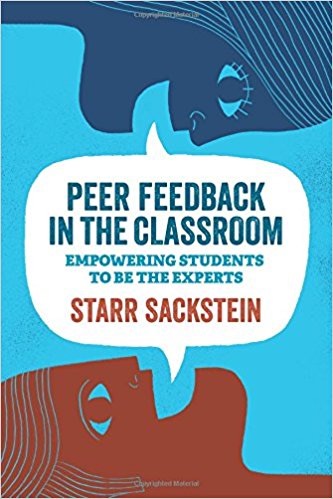Archive for the ‘Book Summaries’ Category
Friday, November 10th, 2017
Peer Feedback in the Classroom: Empowering Students to be the Experts by Starr Sackstein tells the story of how she introduced peer feedback and all of its benefits into her classroom and how it can be applied in other subjects. If you try this, not only will your students develop knowledge and skills better, they will also learn vital collaboration and social skills. Buy one for your school now.
Part 1: The Power of Feedback – 1. The Rational for Teaching Students to Provide Peer Feedback
- Every student has the potential to be an expert in something. Step one is to get to know the students so you can identify and expand their strengths. This can allow the students to share their strengths, perspective, ideas, and preferences. This shows students that there is no one right way to learn or teach. Today it is common for students to know more about some topics than teachers do. This should be exciting as students can share expertise. Technology is an area where this often happens.
- The big idea here is to build trust and enthusiasm, which may not be easy and will take time. A key is to teach students self-advocacy. This will make it easier to address specific needs as students will bring them to you. This should start in kindergarten. This will also serve students throughout their lives. In short, students need to know when they need help and how to get it. Asking peers to help can be a great way to grow. Like all chapters, this one ends with reflection questions for teachers.
2. Developing a Supportive Classroom Culture
- Your initial focus is to develop a welcoming respectful learning environment that supports risk-taking and honest sharing. Students need to be comfortable sharing their work and gain confidence in providing feedback. You have to know your students if you are going to develop rapport so start by finding out what you can about their lives and outside interests as you share some of yourself. Respect can’t be assumed; it must be taught explicitly and modeled continuously. Starr suggests you use surveys to learn about students and provides some samples.
- Rituals and routines are essential to developing rapport. You don’t want to be too flexible and you must establish clear expectations. It might help to have students produce things that are intentionally inferior. They should feel safe correcting these items and see that it’s ok to be wrong. The teacher needs to model feedback intentionally so students can see what is expected. This will include praise and questions that should prompt students to think about how to improve their work. Be sure to share errors you have made. Once your rituals are in place you can give students more control as you facilitate from the side. Starr gives examples from her student newspaper class and another teacher’s fifth-grade class.
-
3. What Meaningful Feedback Looks Like
- Step one is to set clear goals and criteria for success. For each assignment, you need to ask is this worthy of feedback? Use questioning activities and discussions and connect work to prior and future learning. Align learning objectives with standards and the big picture of the lesson. Make sure students see exemplars so they know what mastery looks like, but not ones that are identical to the current assignment.
- Feedback needs to be specific, timely, and delivered in a way that works for the receiver. Focus on one or two points at a time. Rather than saying good job, let them know how they have improved their ability to do something specific. When you are critical, provide suggestions for how to improve something. Limit your feedback to the material covered. Avoid giving feedback too soon as you will end up owning the work yourself. Feedback from teachers should be private. Look for nonverbal cues as you give feedback and adjust your tone accordingly. If a student is shutting down say something encouraging and revisit the issue later.
Posted in Book Summaries, Education Books, Leadership Books | Comments Off on Peer Feedback in the Classroom: Empowering Students to be the Experts by Starr Sackstein
Saturday, December 4th, 2010
Personality Poker: The Playing Card Tool for Driving High-Performane Teamwork and Innovation by Stephen M Shapiro builds on decades of research to offer a simple game that provides deep insights regarding yourself, your coworkers, and your organization. The four personality types are represented by 13 traits on the cards of each suit. You can play a solitaire version or an assortment of versions with others.
Click here for my summary of Personality Poker.
A free online version is available at the Personality Poker site.
Tags: Personality Poker, Personality Testing, Stephen Shapiro
Posted in Book Summaries, Business Books, Leadership Books | Comments Off on Personality Poker: Driving High-Performane Teamwork and Innovation by Stephen Shapiro
Tuesday, May 27th, 2025
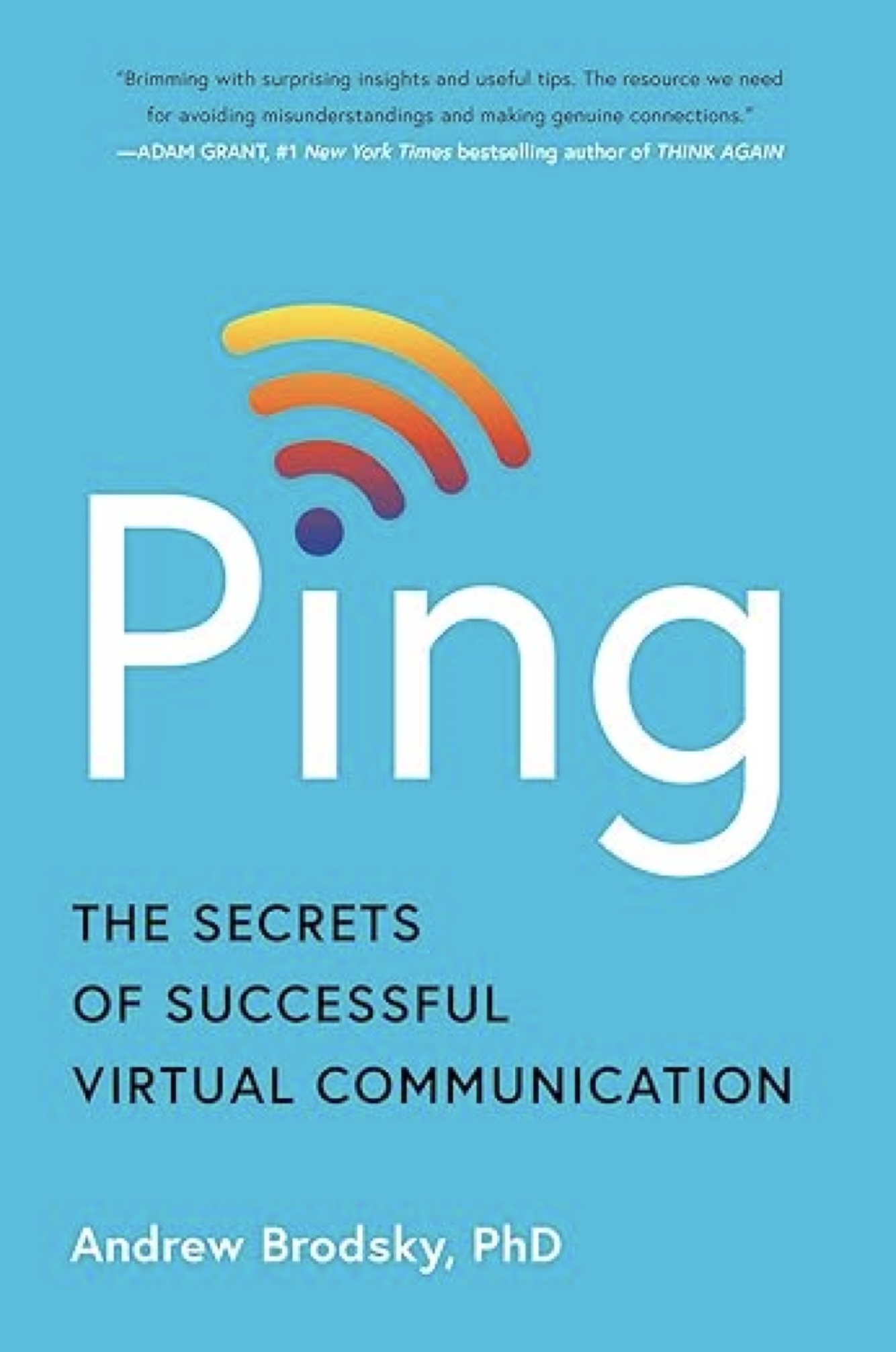
Ping: The Secrets of Successful Virtual Communication by Andrew Brodsky will help you understand which mode of communication to use, when, and why. Be sure to get a copy for your professional development library.
1. The PING Approach
- In addition to in-person, face-to-face communication, there are a variety of virtual methods that you can use to communicate. While face-to-face is usually considered superior, Andrew makes the case that it’s not always the best, depending on the context. This book gives the blueprint that will allow you to leverage technology to improve the quality of your communication. This is important as we are all virtual communicators.
Using Virtual Communication to Get Ahead: 2. To Meet or Not to Meet…That is the Question
- Organizations have a lot of meetings and they are expensive when you consider the total time of the attendees. Meetings need clear goals, agendas, only the people necessary, and time limits. Some are not even necessary. Brainstorming should not start as a group activity. Start by having everyone come up with ideas independently and then share them anonymously with the team. Then get together to discuss, prioritize, and decide what to do.
- Emails are asynchronous communication and should be answered in a day or so. If you need an urgent reply, don’t use email. Don’t have your email app open all day as you will be constantly interrupted. Andrew suggests that you check your email about three times a day.
3. Seeing is Believing. Or Is It?
- Eye contact is just as important in video meetings as it in in face-to-face meetings. Make sure that you have good lighting. (Doug: This is a common mistake.) Avoid back lighting, which can come from lamps or windows when the sun is up. Keep your camera on as no one is impressed by a black screen with a person’s name on it. Don’t use novelty backgrounds, look professional. Bookcases are good. Appearance matters. If you know how others will be dressed, match them. If you don’t know, err on the side of being more formal. Be honest when touting your capabilities. Be sure that you can walk the talk.
Posted in Book Summaries, Business Books, Leadership Books | Comments Off on Ping: The Secrets of Successful Virtual Communication by Andrew Brodsky
Wednesday, March 15th, 2023
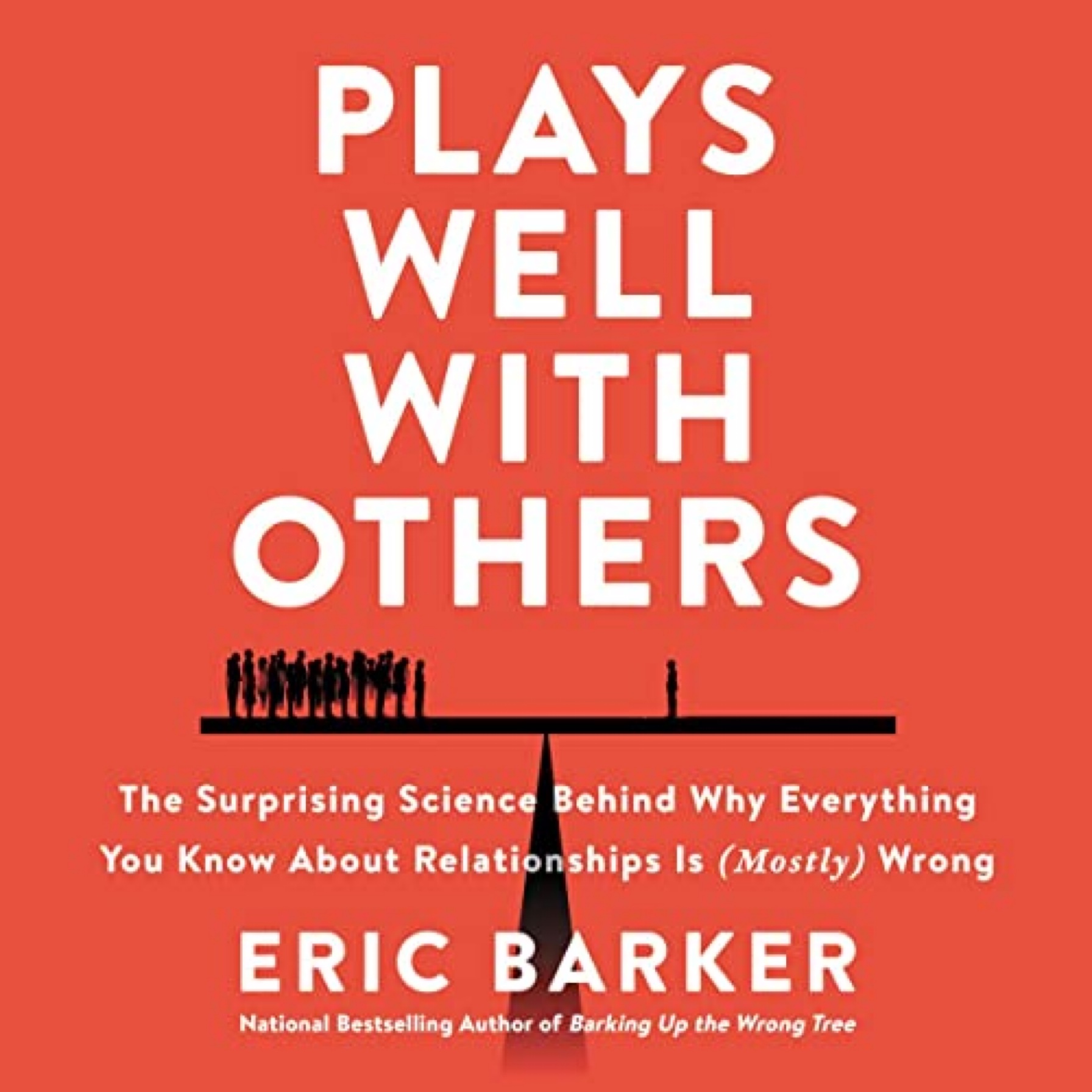
Plays Well With Others: The Surprising Science Behind Why Everything You Know About Relationships I (Mostly) Wrong by Eric Barker explains how having strong, multiple, caring relationships is just as important as diet, exercise, and not smoking when it comes to being healthy, happy, and living longer. There are also lots of great tips for people who want to have marriages that last. School counselors can use it to create important staff development sessions. Be sure to get a copy.
Introduction
We start with a simulated hostage negotiation that demonstrates some of the concepts associated with active listening. This book is about what we get wrong with relationships and how we can be a bit more right. Using the best evidence available we will see that the fundamental core of relationships is the stories our brains weave to create identity, agency, and community. Also, our problems with others often start with our inaccurate perception of them.
Part 1: Can You “Judge a Book by Its Cover”?
1. Here is the story of a female detective known as Ms. Sherlock Holmes from 1917, a time before women could go to Harvard Law School or vote. It shows that common sense and persistence are more powerful than deduction. Eric provides evidence that shows how profiling is of little or no use. The Barnum Effect describes humans’ willingness to accept descriptions of themselves based on a diagnostic instrument. In other words, we are prone to seeing meaning where there is none. We make up stories to help us make sense of the world, even if the stories are not true. The primary thing we need to contend with, therefore, is our own cognitive biases.
2. Those who possess accurate person perception are happier, less shy, and better with people. They have better interpretations of body language and nonverbal communication. Unfortunately, most of us are horrible at these skills. We tend to exaggerate the extent to which others think and feel like we do. Women are better at this, but not much. If you want to get better you need to be more curious and do what you can to elicit stronger signals that make others more readable. Pay special attention to changes in voice.
3. First impressions are generally accurate, but once they are set they are very hard to change. You can usually predict how students evaluate a teacher by watching a thirty-second video of a teacher. We are biased in our thinking and use confirmation bias to support other biases. Try to make others more readable and try to resist confirmation bias lock-in.
Here is what to do. 1. Set the bar high for making initial judgments. 2. Keep some distance and avoid snap judgments. 3. Make a serious effort to consider the opposite of your first impression. Look back on your mistakes and hope they reveal your biases. Be sure to give everyone a second chance. Good people can have lousy days. Your negative judgments are less reliable than your positive judgments.
Posted in Book Summaries, Education Books | Comments Off on Plays Well With Others: The Surprising Science Behind Why Everything You Know About Relationships Is (Mostly) Wrong by Eric Barker
Thursday, April 19th, 2012
Power Listening: Mastering the Most Critical Business Skill of All by Bernard T. Ferrari (©2012, Portfolio/Penguin: New York, NY) provides specific lessons in how to improve what may be the single most undervalued and underdeveloped skill for leaders, educators, parents, and students. Bernie makes a compelling case that anyone can improve from a mediocre listener to a power listener. It just takes commitment and practice. This is the rare resource that goes beyond just telling you that listening is important to telling you how to do it well. Every organization should click the icon below to buy more copies of this vital book for everyone in a position of leadership.
Tags: Bernard T. Ferrari, Listening, Power Listening
Posted in Book Summaries, Business Books, Leadership Books | Comments Off on Power Listening: Mastering the Most Critical Business Skill of All – Vital Book
Monday, February 7th, 2011
Practically Radical: Not-So-Crazy Ways to Transform Your Company, Shake Up Your Industry, and Challenge Yourself, by William C. Taylor lives up to its title. Daniel Pink calls it “the most powerful and instructive change manual you’ll ever read.” Taylor, the cofounder of Fast Company Magazine tells engaging stories of the successful companies he studied and generalizes from their successes. Any leader or aspiring leader should read this book.
Click here for my summary of Practically Radical.
Tags: Change, Leadership, Practically Radical, William C. Taylor
Posted in Book Summaries, Business Books | Comments Off on Practically Radical – Not-So-Crazy ways to transform your organization
Monday, October 3rd, 2016
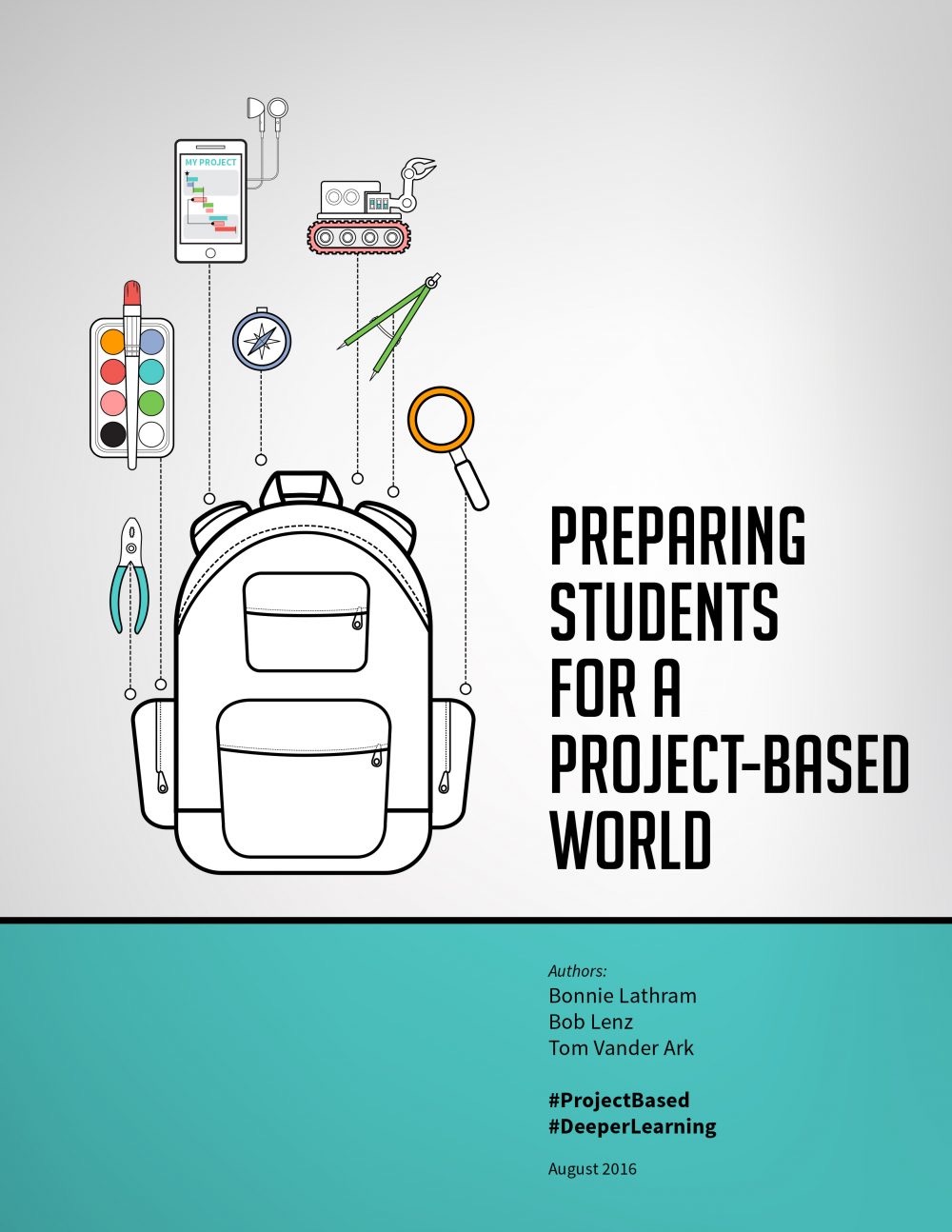
Preparing Students for a Project-Based World by Bonnie Lathram, Bob Lenz, and Tom Vander Ark spells out the rationale for introducing project-based learning as an excellent way to prepare students for college and careers. It is the first of three reports about the new economy and inequities in student preparation. The next two parts will deal with preparing teachers and students for a project-based classroom.
Introduction
- The new economy requires a lot from young people. The bar is higher and the rules have changed in five ways. 1. Anyone who can access the Internet can learn to code, build and app, and start a business. This makes competition much greater. 2. The pace of technological change requires continuous learning. 3. As robots take over routine tasks, non-routine work is organized into projects. 4. Soon 40% of workers will be freelance and people employed by companies will move frequently. 5. Value is produced by initiating and sustaining complex work applying design and problem-solving skills.
- As a result, we need to reimagine how we teach students and how we organize schools. Students need to use their own interests and passions to grow their skills, master core academic content, and learn how to collaborate with others. One way to do this is to give all students access to high-quality project-based learning.
The New Economy
- For most workers, a series of projects will mark their career. There is also an increase in gigs, which are short-term routine tasks requiring low-skills. The classic example here is Uber where anyone with a car and a drivers license can earn a modest income. Better paying jobs are just the opposite since they usually involve long-term projects, require much more skill, and pay much more. Today’s youth also has to beware of jobs subject to automation. The classic example here is tax preparation.
Inequity: Old and New
- Policy changes associated with No Child Left Behind and Race to the Top have not reduced gaps between black and white performance. Nine out of ten children from the bottom of the income ladder who graduate from college move to a higher economic bracket. Being poor, however, is an impediment to getting the education that can lift you out of poverty. Most of the jobs created since the last recession have gone to people with at least some college education. Higher college costs and stagnant wages have lowered the return on college investments so don’t go until you are ready and don’t leave without a degree.
A Project-Based World
- Technological and economic change results in a very different job market for students to face. There are six ways to prepare for a project-based world and it is vital that teachers facilitate all of them. 1. Look for real-world internships. 2. Get real-time feedback, not just grades. In your career you will get feedback so get ready for it. 3. Learn how to collaborate. 4. Project results need to be communicated so work on communication skills including public speaking. 5. Personalize your learning. This will involve applying the skills learned elsewhere. 6. Learn about project management and team leadership.
Deeper and Project-Based Learning
- Project-based learning is one way to support deeper learning outcomes. They should be demanding and require a public audience. Essential project design elements include: a focus on student learning goals and standards, meaningful problems and appropriate levels of challenge, an extended process, a real-world context, student voice and choice, time for reflection, opportunities to critique and revise, and a public presentation. This report includes exemplars using several project results.
- This chapter ends with several fallacies associated with traditional non-project-based education. These include: memorizing content is all that’s necessary, more homework increases rigor but PBL is not rigorous, and PBL only works for white middle class students. The authors claim that PBL allows students to learn and master content knowledge, demonstrate and apply knowledge and skills, and learn how to learn as they transfer knowledge to new and different contexts.
A Call For Action
- It’s clear that we need advocates in the education and business community to move forward on this vital issue. Do what you can to get this information into the hand of policy makers and engage them in conversations. Parents can also play a key role as advocates. The authors list ten elements necessary to make high-quality possible. They are: 1. Pedagogy – Combine PBL with personalized learning. 2. Accountability – Assign individual as well as team projects an make all students in a group accountable. 3. Integration – Projects should span disciplines. This may require some team teaching. 4. Badging – Students should receive badges to certify things like project management skills. 5. Voice – Students should be responsible for defining the scope and deliverables of their projects. 6. Assessment – Teachers should check in periodically to provide formative feedback and use a rubric to assess completed projects. 7. Exhibitions – Students should be able to present their work to a public audience. 8. Portfolios – Students should collect and manage artifacts in a portfolio as evidence of their learning. 9. Training – Teachers need significant training prior to implementing PBL. 10. Tech – Powerful tech tools should be available to students and teachers
The Authors
- The authors bios are included at the end of this document. Bonnie Lathram is a Director at Getting Smart where she leads large-scale education initiatives. Bob Lenz is the Executive Director of the Buck Institute for Education. Tom Vander Ark is CEO of Getting Smart and a partner at Learn Capital, an education venture fund. You can follow them on Twitter at @belathram (Bonnie) @pblbob (Bob) and @tvanderark (Tom).
Posted in Book Summaries, Education Books, Leadership Books | Comments Off on Preparing Students for a Project-Based World by Bonnie Lathram, Bob Lenz, and Tom Vander Ark
Thursday, November 22nd, 2012
Preventing Plagiarism: Tips and Techniques by Laura Hennessey DeSena (©2007, National Counsel of Teachers of English: Urbana, Il) offers teachers (and even parents) ways to promote original thinking and head off plagiarism at its sources. Assignments that use free writing and original sources can build student confidence and critical thinking skills so they will be less likely to use online paper mills and cut and paste without attribution. Every college and secondary school teacher should have a copy, so click the icon at the bottom of any page to purchase. Even teachers of younger students can adapt the ideas presented here.
Posted in Book Summaries, Education Books | Comments Off on Preventing Plagiarism: Tips and Techniques by Laura DeSena
Monday, April 10th, 2023
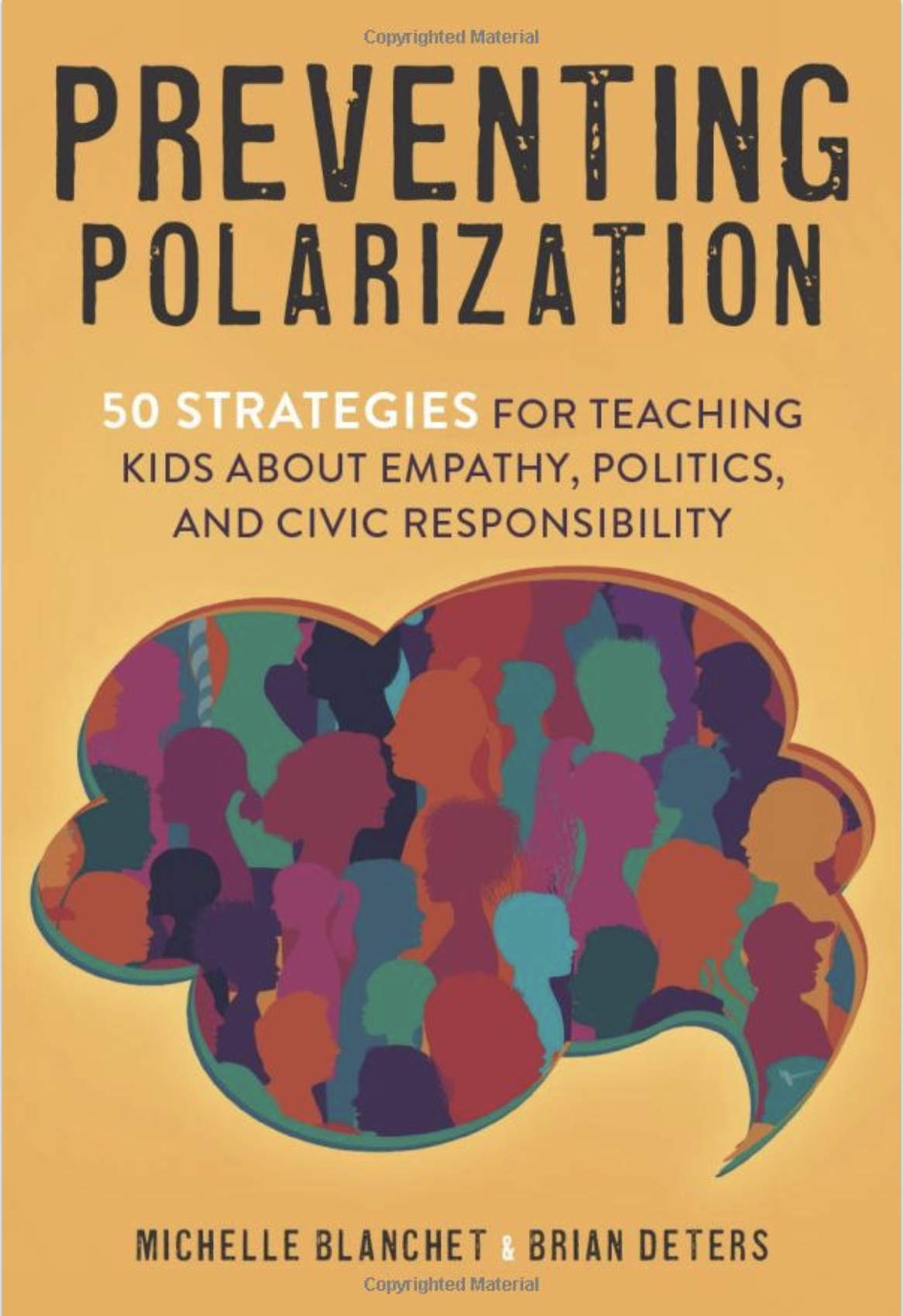
Preventing Polarization: 50 Strategies for Teaching Kids About Empathy, Politics, and Civic Responsibilty by Michelle Blanchet & Brian Deters is aimed at social studies (civics) teachers but is also a fine resource for teachers and parents of students in upper elementary school on up. We need to encourage students to take on controversial topics by gaining knowledge of all sides of each argument. They should also be allowed to engage in open-ended problem-solving, creative hands-on activities, collaboration, and community service.
Introduction: Why we need to stop avoiding civics and politics
- Not being able to talk about politics is a communications failure. We all need the same things and we all most likely want what’s best for everyone. The authors hope to help teachers and parents open communication on political problems so that they can be better solved, which won’t happen if they are ignored. Learn how to teach the 4 Cs: critical thinking, collaboration, creativity, and communication.
1. Practice Sense-Making
- Try to let students experience the world as much as possible, and let them try to make sense of what they experience. People learn best when they are actively involved, and what may seem like play can often be active learning. Ask more how and why questions and fewer what questions. Ask how something works using the examples the authors give.
- As for politics, beware of supporting a candidate based on their identity rather than their policies. Make sure they understand how the actions of the government impact their lives and encourage them to get involved. Polarization happens in times of rapid change.
2. Keep Asking Questions
- Children are very curious as they try to figure out how the world works. As we age, however, we become less curious as we no longer think we need to understand more. The trick, therefore to becoming a lifelong learner is to stay curious. You do this by questioning everything. It’s the teacher’s job to ask a lot of questions to encourage critical thinking and to encourage students to ask questions themselves. Teachers can use question quotas and other techniques included here.
3. Cultivate Humility
- A wise teacher once told me “Dr. Green, you have to keep your ego out of it.” The other thing you need to do is to help students do the same. For this you need an open mind, be ok with being wrong, and learn from mistakes. Learning how to manage your own emotions is vital if you want to model this behavior. A respectful disagreement involves being hard on the problem and easy on the other person.
- You want kids to be confident, but not overconfident. Be certain not to embarrass anyone for being wrong. Finally, the authors suggest conducting structured debates where students make statements, present data, explain how the data supports their statement, prepare for rebuttal, and present a conclusion.
Posted in Book Summaries, Education Books, Leadership Books | Comments Off on Preventing Polarization: 50 Strategies for Teaching Kids About Empathy, Politics, and Civic Responsibilty by Michelle Blanchet & Brian Deters
Tuesday, December 14th, 2010
Techniques of Propaganda and Persuasion by Magedah E. Shabo provides an historical look at how propaganda has been used to manipulate the masses. The book is packed with interesting examples and illustrations. There is a companion CD with an extensive PowerPoint that offers a detailed explanation of the 11 techniques. The book will allow students and adults avoid being manipulated by advertisers, politicians, and anyone using the techniques. Every social studies teacher should have one in their classroom and no library is complete without it.
Click here for my summary of Propaganda and Persuasion.
Tags: Megedah Shabo, Persuasion, Propaganda
Posted in Book Summaries, Education Books, Leadership Books | Comments Off on Propaganda and Persuasion – Book Summary Learn how to avoid being manipulated
